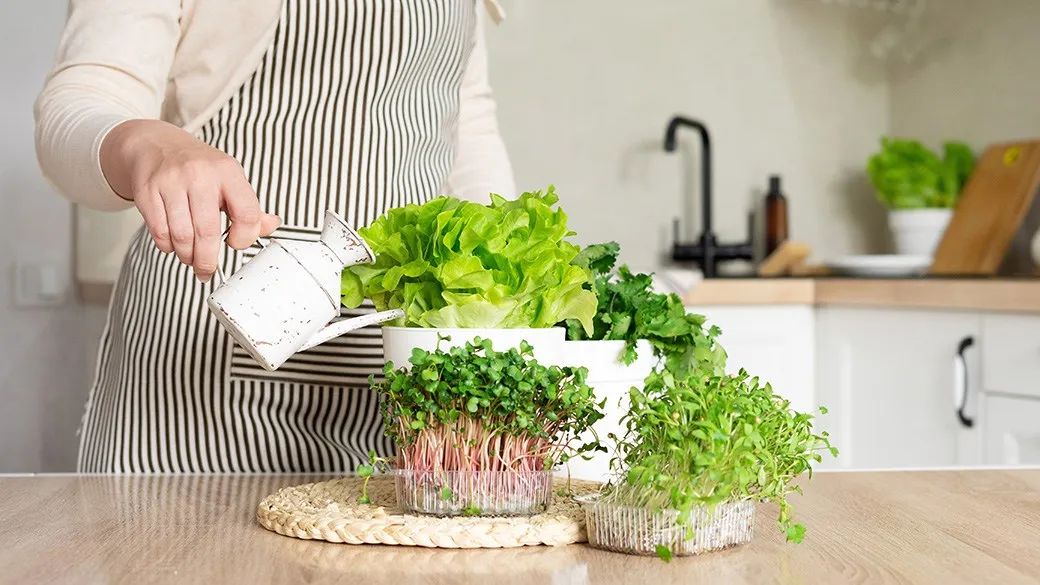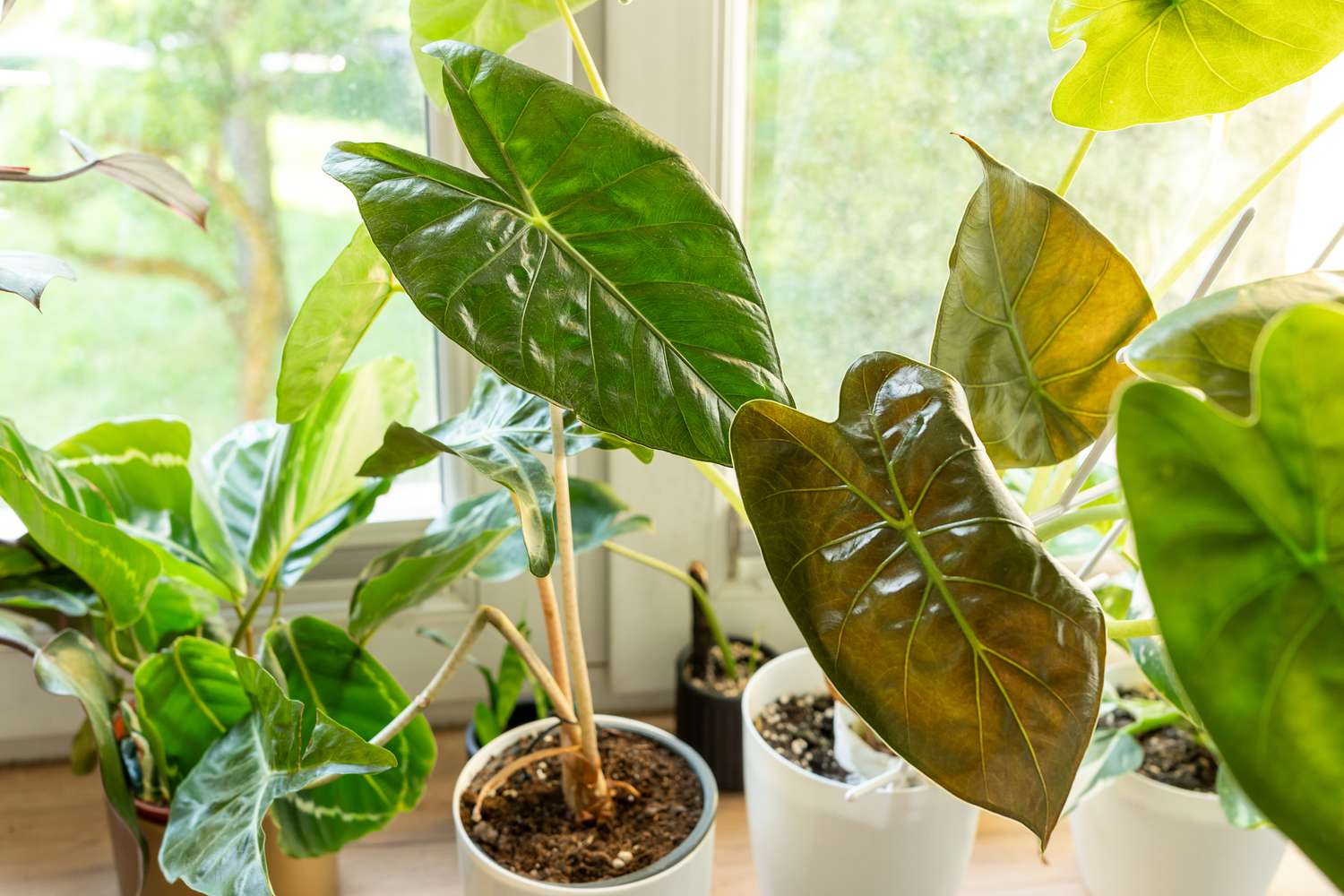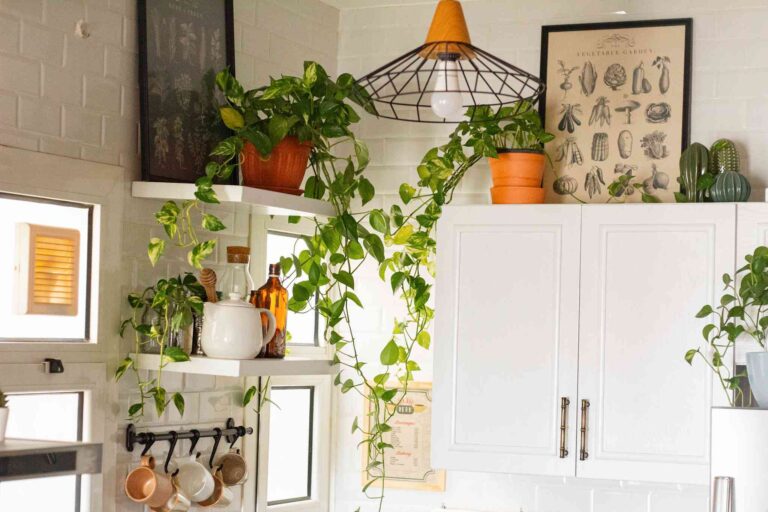Contents
Introduction
Imagine stepping into your kitchen and being greeted by a burst of green freshness—vibrant indoor plants that not only look great but also make your space feel more alive. Adding plants to your kitchen isn’t just about beautifying your space; it’s about creating a lively, healthy environment that enhances your cooking experience.
Plants in the kitchen can do wonders. They help purify the air, making it fresher and more pleasant. They also bring a splash of color and life to what can sometimes feel like a dull or utilitarian space. And let’s not forget, having a little green around can make cooking feel a lot more enjoyable and less like a chore.
But why exactly is the kitchen a prime spot for indoor plants? Well, kitchens often have unique conditions that are perfect for certain types of plants. The warm, humid environment is great for plants that thrive in these conditions. Plus, if you have a sunny kitchen, you’re already halfway to having a mini indoor garden.
In this guide, we’ll walk you through the best indoor plants that add a touch of freshness to your kitchen. Whether you’re looking for low-maintenance herbs to spice up your meals or elegant greenery that requires minimal care, we’ve got you covered. We’ll also share tips on how to care for these plants and how to create a stunning plant display that complements your kitchen decor.
So, if you’re ready to transform your kitchen into a greener, more vibrant space, keep reading. Your future self (and your taste buds) will thank you!
Factors to Consider
Alright, so you’re sold on the idea of adding plants to your kitchen—great choice! But before you start picking out your new leafy friends, there are a few things you need to think about to make sure they’ll thrive in their new home. Let’s break it down:
Light Requirements
First up, let’s talk about light. Plants need light to grow, but different plants have different needs. Some love bright, direct sunlight, while others are totally cool with lower light levels. Check out how much natural light your kitchen gets. Is it bathed in sunshine all day, or is it more of a cozy, low-light space? Knowing this will help you choose plants that will be happy in your kitchen’s lighting conditions.
Humidity Levels
Next on the list is humidity. Kitchens are usually more humid because of cooking and boiling water, and many plants absolutely love that. If your kitchen tends to be on the moist side, you might want to pick plants that thrive in higher humidity. Conversely, if your kitchen is dry, you’ll need to choose plants that don’t mind a bit less moisture.
Space Constraints
Finally, consider the space you have available. Kitchens come in all shapes and sizes, so you’ll want to choose plants that fit your space. Whether you’ve got a small windowsill or a big, sunny spot on the countertop, there’s a plant that will work perfectly. Think about how much room you have and whether you want something that can hang, sit on a shelf, or even climb a trellis.
By keeping these factors in mind, you’ll set your plants up for success and ensure they’re a perfect fit for your kitchen. This will not only help them thrive but also make your kitchen a greener, fresher place to cook and hang out.
Ready to dive into the best plants for your kitchen? Let’s get started!
Top Indoor Plants for Your Kitchen
Now that you know what to consider before choosing your kitchen plants, let’s get to the fun part: picking out the best ones! Whether you’re looking for fresh herbs to spice up your meals or stylish greenery to brighten up your space, we’ve got you covered. Here’s a rundown of some top indoor plants that are perfect for adding a splash of freshness to your kitchen.
Herbs
If you love cooking with fresh ingredients, herbs are a fantastic choice. Not only do they add flavor to your dishes, but they also make your kitchen smell amazing. Here are some must-have herbs:
- Basil: This aromatic herb is a staple in many kitchens. It loves bright, indirect light and needs regular watering. Plus, it’s great for making pesto or adding to pasta dishes.
- Mint: Mint is super easy to grow and adds a refreshing twist to drinks and desserts. It thrives in a sunny spot and needs a bit of moisture, so keep it well-watered.
- Parsley: This versatile herb is perfect for garnishing dishes or adding a burst of flavor. It grows well in both low and bright light and doesn’t require too much fuss.
Air-Purifying Plants
If you want to improve your kitchen’s air quality while adding some greenery, air-purifying plants are a great choice. They help remove toxins from the air and are usually pretty easy to care for:
- Spider Plant: Known for its air-purifying powers, the spider plant is also a visual treat with its long, arching leaves. It’s low-maintenance and loves a bright spot with indirect sunlight.
- Snake Plant: This hardy plant is nearly indestructible and thrives in low light. It’s perfect for busy kitchens and does a great job at cleaning the air.
- Pothos: Pothos is a favorite for its trailing vines and ease of care. It can grow in a variety of light conditions and is excellent for adding a touch of greenery to shelves or hanging baskets.
Compact Plants
Short on space? No problem! These compact plants are perfect for small kitchens or limited countertops:
- Succulents: These adorable little plants are perfect for sunny spots and require minimal watering. They come in various shapes and sizes, making them great for adding a touch of green without taking up much space.
- Peace Lily: With its elegant white flowers and dark green leaves, the peace lily is a stunning addition to any kitchen. It’s also low-maintenance and can thrive in low to medium light.
- ZZ Plant: The ZZ plant is another low-maintenance option that’s perfect for a busy kitchen. It’s tolerant of low light and infrequent watering, making it a great choice for less sunny spots.
Edible Plants
Why not grow your own ingredients? Edible plants are not only practical but also add a fresh touch to your kitchen:

- Chili Peppers: Spice up your cooking with homegrown chili peppers. They need plenty of light and warmth to flourish, but the payoff is worth it when you can add a dash of heat to your dishes.
- Green Onions: These are super easy to grow and don’t need much space. Just snip off what you need and watch them regrow. They’re great for salads, soups, and garnishes.
- Lemongrass: This fragrant herb adds a delightful citrus flavor to your cooking. It loves a sunny spot and needs regular watering to stay happy.
With these fantastic plant options, your kitchen will not only look fresher but also feel more inviting. Ready to pick out your perfect plants? Let’s dive in and bring some green into your kitchen!
Tips for Plant Care in the Kitchen
You’ve chosen your plants and they’re now happily settled in your kitchen. But how do you keep them looking their best? Don’t worry—it’s not as complicated as it sounds! Here are some easy tips to help you care for your indoor plants and keep them thriving in your kitchen.
Watering Needs
First off, let’s talk about watering. Each plant has its own water preferences, so it’s important to know how much and how often to water. Generally, you want to keep the soil moist but not soggy. Overwatering can lead to root rot, while underwatering can cause your plants to dry out. A good rule of thumb is to check the soil about an inch down; if it feels dry, it’s time to water.
For herbs and edible plants, make sure the soil is consistently moist since they’re often in active growth. For more forgiving plants like succulents or ZZ plants, less frequent watering is perfectly fine. Just be sure to adjust your watering routine based on the specific needs of each plant.
Cleaning and Maintenance
Keeping your plants clean and healthy is key to their longevity. Dust can accumulate on leaves, blocking sunlight and reducing their ability to photosynthesize. Give your plants a gentle wipe with a damp cloth every couple of weeks to keep them dust-free. If you spot any yellowing leaves or dead stems, trim them off to encourage new growth and prevent disease.
Also, keep an eye out for pests like spider mites or aphids. Regularly check the undersides of leaves and act quickly if you notice any unwanted visitors. Most pests can be managed with natural solutions or mild insecticidal soap.
Re-potting and Soil
As your plants grow, they might outgrow their pots. Re-potting is essential to give them more space and fresh soil. Most plants need to be re-potted every 1-2 years. When you see roots poking out of the bottom of the pot or the plant seems to be growing slower, it’s time for a new pot.
Choose a pot that’s slightly larger than the current one and use fresh, well-draining potting mix. For herbs and edible plants, consider using a potting mix that’s rich in nutrients to support their growth. If you’re unsure, ask for recommendations at your local garden center or nursery.
By following these simple care tips, your kitchen plants will stay healthy and vibrant, adding a touch of green to your space and improving your kitchen’s atmosphere. Enjoy the process of nurturing your plants and watch your kitchen garden thrive!
Creating a Kitchen Plant Display
So, you’ve got your plants and you’re ready to show them off! Arranging your plants in a way that looks great and complements your kitchen can turn your space into a mini green paradise. Here’s how to create a stunning plant display that’s both functional and fabulous.
Arrangement Ideas
When it comes to arranging your plants, think about how you can make the most of your space. Mix and match plant heights, shapes, and colors for a dynamic look. You might want to group plants together on a shelf or create a little corner garden. Don’t be afraid to experiment with different arrangements until you find what works best for your kitchen.
Consider using plant stands or tiered shelving to add some visual interest. This way, you can showcase a variety of plants at different levels, which makes the display more engaging. Just make sure to choose stands that fit well with your kitchen’s decor and don’t overcrowd the space.
Hanging vs. Shelving
If you’re short on counter space, think about hanging plants. They can add a lush, floating vibe to your kitchen and are perfect for trailing plants like pothos or spider plants. Use wall-mounted planters, hanging baskets, or macramé hangers to display your plants in style.
On the other hand, if you have more counter or shelf space, arrange your plants on open shelves. This setup is great for displaying a mix of herbs, succulents, and decorative pots. You can also use plant stands or plant ladders to add some height and variety.
Integrating Plants with Kitchen Decor
To make your plants a seamless part of your kitchen, try to match them with your existing decor. Choose pots and planters that complement your kitchen’s color scheme and style. If your kitchen has a modern vibe, go for sleek, minimalist pots. For a more rustic look, try terra-cotta pots or woven baskets.
You can also integrate plants into your kitchen design by placing them on countertops, windowsills, or even hanging from the ceiling. Think about how plants can enhance your kitchen’s overall aesthetic and make it feel more inviting.
Creating a beautiful plant display in your kitchen is all about having fun and experimenting. Play around with different arrangements, mix up plant types, and find what makes your space feel lively and fresh. With a little creativity, your kitchen will be transformed into a green oasis that’s both stylish and functional.
Troubleshooting Common Issues
Even with the best care, sometimes things can go a bit haywire with your kitchen plants. Don’t worry—most problems are easy to fix! Here’s a quick guide to troubleshooting some common issues you might run into and how to get your plants back on track.
Pest Problems
Pests can be a real nuisance, but spotting and dealing with them early can save your plants from serious damage. Keep an eye out for tiny insects or webbing on your plants. Common culprits include spider mites, aphids, and gnats. If you see any signs of pests, start by gently washing the affected plant with a mixture of water and mild soap. You can also use insecticidal soap or neem oil for more stubborn infestations. Regularly checking your plants and keeping them clean can help prevent pests from becoming a big problem.
Yellowing Leaves
Yellow leaves can be a sign of various issues, so it’s important to figure out the cause. If your plant’s leaves are turning yellow, it might be due to overwatering or underwatering. Check the soil moisture—if it’s too dry or too wet, adjust your watering routine accordingly. Yellowing can also be caused by poor light conditions or nutrient deficiencies. If the plant isn’t getting enough light, move it to a brighter spot. For nutrient issues, consider using a balanced fertilizer to give your plant a boost.

Overwatering vs. Underwatering
Finding the right balance with watering can be tricky, but it’s crucial for healthy plants. Overwatering is a common issue and can lead to root rot. If the soil is constantly soggy and you notice the plant is wilting, it might be getting too much water. On the flip side, underwatering can cause plants to become dry and crispy. If the soil feels dry and the plant looks droopy, it needs more water. A good rule of thumb is to let the top inch of soil dry out between waterings for most plants. Adjust your watering schedule based on the plant’s specific needs and the conditions in your kitchen.
By addressing these common issues promptly, you can keep your kitchen plants looking their best and thriving in their green home. Remember, a little bit of attention goes a long way in ensuring your plants stay healthy and beautiful. Happy gardening!
Conclusion
So there you have it! Adding indoor plants to your kitchen is a fantastic way to brighten up your space and bring a touch of nature indoors. With the right plants and a little bit of care, you can transform your kitchen into a vibrant, fresh oasis that not only looks great but also enhances your cooking experience.
We’ve covered everything from selecting the best plants for your kitchen to creating a stunning display and troubleshooting common issues. Whether you’re a plant newbie or a green thumb, these tips will help you keep your kitchen garden thriving and looking its best.
Remember, the key to a successful plant display is choosing plants that fit your kitchen’s light, space, and humidity conditions. Don’t be afraid to experiment with different arrangements and plant types to find what works best for you. And with a little bit of care, you’ll enjoy the beauty and benefits of your indoor plants for years to come.
So, what are you waiting for? It’s time to pick out your favorite plants and start creating your own green kitchen paradise. Happy planting, and enjoy the fresh, lively atmosphere your plants will bring to your home!



